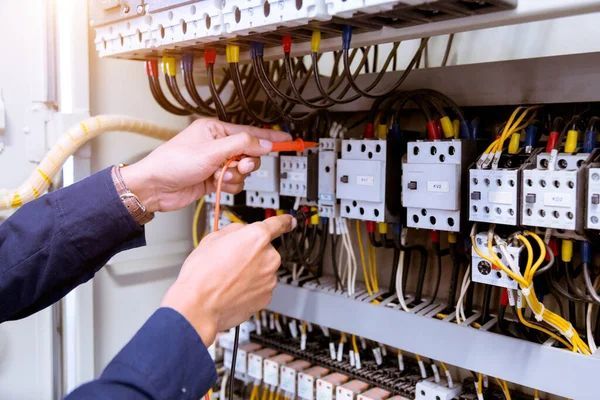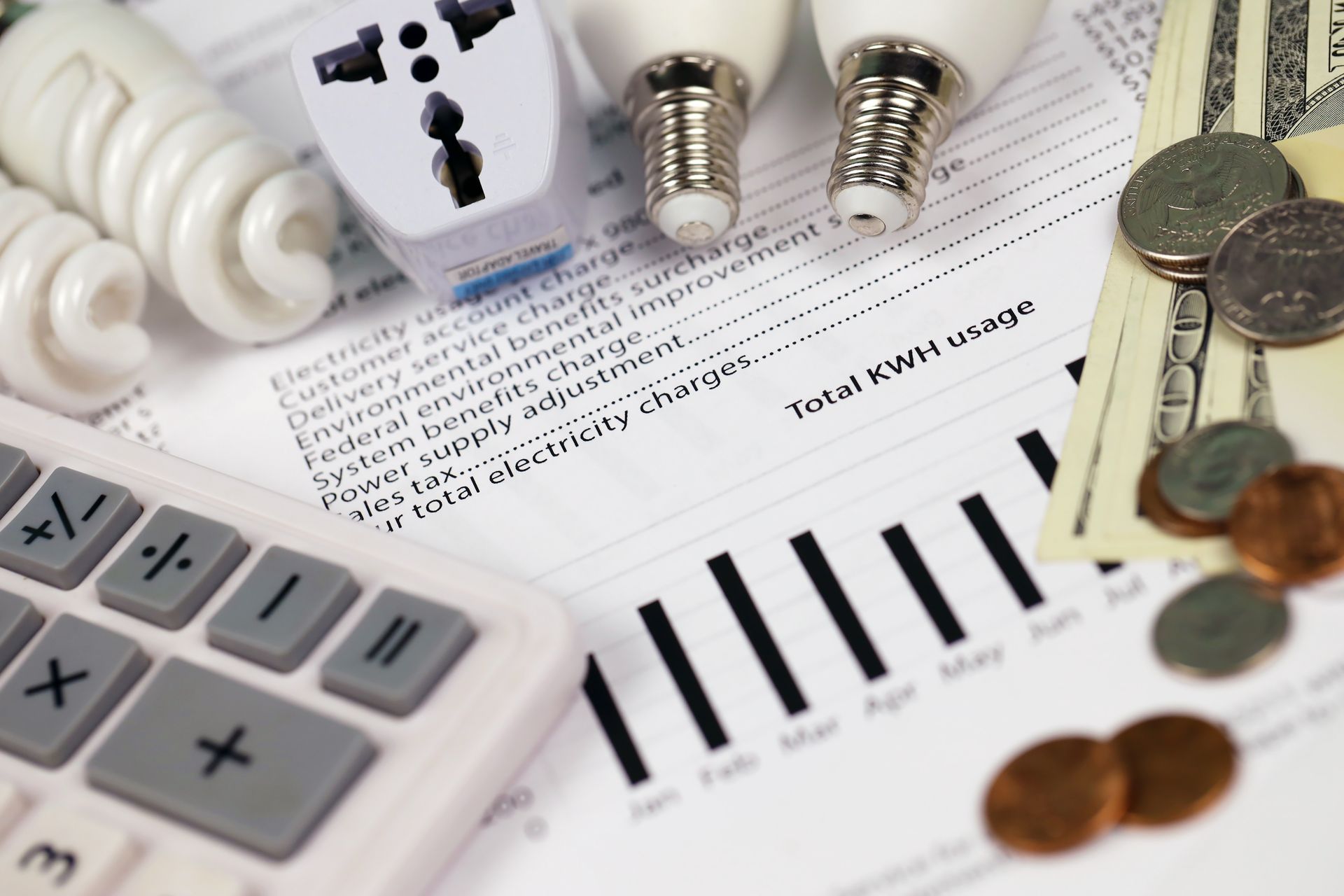Top Electrical Maintenance Tips for Home Safety and Efficiency
Protect Your Property, Save Money, and Ensure Peace of Mind

Electrical safety checks and inspections UK homes involve system audits that ensure wiring, circuits and/or devices comply with BS 7671 and safety regulations. About: Landlords need an EICR at least every five years. Homeowners receive fault finding, risk reduction and evidence for insurance. Inspections include consumer units, earthing, RCDs, sockets, lights, and bonding. To avert dangers, reports highlight C1, C2 and FI codes with distinct remedies. Our guide below details scope, cost and time.
Why Are Electrical Checks Essential?
Frequent checks locate issues before they ignite, ensure properties meet British legislation, and reduce the risk of shock, fire and expensive repairs. Inspectors evaluate risk throughout the installation, raise immediate hazards, recommend remedies and assist in demonstrating diligence for landlords and owners.
1. Fire Prevention
Electrical faults cause thousands of UK house fires every year, with domestic electrical problems accounting for a significant portion of house fires. Checks reveal hazards you may not see: overheating outlets that feel warm to the touch, scorched socket plates, buzzing switches, loose wiring from past DIY, and cracked plugs on old lamps. Kitchens are high-wattage; overburdened extensions and high-draw appliances on the same circuit strain wiring to breaking point.
Inspectors test consumer units, RCDs and protective devices to find out if they trip quickly enough. They’ll check for worn cable sheathing, rotten joints concealed by plaster and bad bonding in bathrooms and kitchens where water can convert a minor fault into a serious shock or fire hazard.
Maintain a layered defence. Fit and test smoke alarms every month. Employ RCD protection for sockets and outdoor circuits. Swap obsolete fuse boxes with modern consumer units with RCDs and surge protection.
2. Legal Compliance
For UK rentals, an Electrical Installation Condition Report (EICR) is due at least once every five years, or at the beginning of each new tenancy. That responsibility lies beneath electrical safety legislation and the Housing Act regime. When skipping it risks fines of up to £30,000 and enforcement notices.
Landlords require certificates to appease agents, insurers and local authorities. Maintain accurate records of reports, corrective work, invoices and re-tests. This paper trail demonstrates diligence should a claim or dispute arise, as well as reinforcing sales or lettings.
3. Family Protection
Why Electrical Inspections are Important? Simple steps help: secure loose wires, replace cracked socket plates, and avoid daisy‑chained extensions. Fit child-safe covers only when necessary, and educate children not to poke or tug at wires.
Make safety a habit Warm plugs, flickering lights and tripping breakers? Book regular inspections to identify unseen hazards, such as ring finals with breaks, reversed polarity or lack of bonding in areas near sinks.
Education lands best with instances. Demonstrate how a nicked kettle lead or a phone charger with a swollen plug can fail fast.
4. Financial Savings
Small faults grow A loose connection can char a terminal block and destroy a socket, then the wall. Early fixes are cheaper than rewires, and good records lower an insurer’s chances of rejecting a claim for bad maintenance.
Efficiency pays off We’ve all come across old halogens, tired fridges and buzzing transformers wasting power. Improvements – LED lighting, A-rated appliances, timed controls – reduce bills and increase property value.
5. System Efficiency
Checks fine-tune performance. Engineers check breakers, fuses, RCD trip times, balance loads across circuits and swap tired components to reduce nuisance trips and blackouts. They flag obsolete consumer units, undersized earths and mismatched parts all too. Replacing wasteful kit with contemporary, energy-saving alternatives reduces demand and maintains system stability on a daily level.
Understanding Your EICR
What is an EICR (Electrical Installation Condition Report)? It is an extensive inspection and testing of circuits, consumer units, earth bonding and sampling of sockets, switches and lights. You might hear it referred to as hard wire testing, a periodic inspection or an electrical safety certificate. The result is a multi-page document with hazards, test results and clear actions you can take.
The Report
Expect a seven-page report that combines visual examination with test results. The electrician checks the consumer unit (fuse board), protective devices, RCD operation, wiring routes, earthing and bonding to gas and water, and a sample of sockets and fittings. In kitchens and bathrooms, they focus on higher risk areas. Houses that have extensions, such as outbuildings or EV chargers, get special attention.
Test sheets note continuity, insulation resistance, polarity, loop impedance and RCD trip times. Photos frequently depict loose terminations, scorched breakers, or dry brittle cable sheaths. Defects are ranked by risk so you know what needs doing now and what can wait.” If you have a rental, you’ll see dates for the next check (typically every 5 years) while special cases like pools may require annual checks.
Think of the report as your maintenance plan. You label urgent items, advise on things you should consider upgrading that enhance safety and reliability (such as RCD protection on all socket circuits).
The Codes
The coding system keeps things clear: C1 means danger present, C2 means potentially dangerous, C3 means improvement recommended, and FI means further investigation required. Live parts exposed by a cracked socket are C1. A circuit with no RCD in a wet area may be C2. An old but working consumer unit frequently comes out as C3. Should a mystery cable be supplying an unidentified load, that could be FI.
C1 and C2 Fix Immediately These are priority risks and are often required to be remedied within around 28 days, or sooner if indicated, otherwise penalties apply where applicable. While C3s do not fail the report, making upgrades here enhances safety despite your certificate still being valid. FI requires a quick follow-up test or a specialist visit to close the gaps.
The Outcome
Pass or fail relies on codes. Any C1, C2, or FI renders the EICR ‘unsatisfactory’ and requires urgent action, while only C3 items can still produce a ‘satisfactory’ outcome. If you’re a landlord, carry out remedial work within the timeframe stated – usually 28 days – and retain evidence for tenants and insurers. Use the result to inform buyers, too - a clean EICR adds peace of mind even when not a legal requirement. Once repairs are made, schedule a re-inspection to produce a new, valid EICR and establish a due date for your next one.
Proactive Electrical Maintenance
Proactive electrical maintenance equates to planned inspections and repairs, and tidy records of what was attended to and when. It stops shocks, fires and unnecessary harm, and keeps you compliant with UK regulations such as the Electricity at Work Regulations 1989 and the Private Rented Sector (England) Regulations 2020. Most homes require full inspections every 5–10 years, but use, age, and previous reports may warrant shorter cycles. Good maintenance saves energy, extends kit life and reduces the risk of expensive call-outs.
Visual Checks
- Cracked faceplates, loose switches, scorch marks and discolouration on sockets, spurs and fuses should be searched for.
- Consumer unit labels, cover closed, blanks secured, access clear. Nothing stored that would restrict ventilation.
- Look for abused flexes under desks and beds. Steer clear of crushed cables behind fridges or washing machines.
- (Things like tripping breakers, warm outlets, buzzing from dimmers and flicker that persists across rooms.
- Use safety covers on unused sockets in homes with small children.
- Recorded date, room, problem and solution given. Call out an expert if you notice burning smells, melted plastic and repeated breaker trips.
Brief flickering of lights or a soft buzz may allude to loose connections. A hot plug top on a low-load appliance indicates ‘life-impairing wear’. If a socket front is warm after light use, cease using it and get it checked out.
Appliance Care
Unplug idle devices It reduces arcing fire risk, cuts standby operation and facilitates cleaning.
Inspect cords for nicks, flat spots and kinks. Replace wobbly or burned plugs. Clear vents on fridges, dryers and games consoles – dust obstructs airflow and raises heat.
Utilise bulbs of appropriate wattage, and the appropriate fuse in plugs (generally 3 A or 13 A). Follow the manufacturer’s instructions for kettles, heaters and extension leads. Do not daisy‑chain.
For high-risk or heavy-use kit—heaters, shared house kettles, vacuums—organise Portable Appliance Testing (PAT). It’s useful in rentals or HMOs, where usage will differ. Keep simple logs: device, test date, result, and next due date.
Professional Help
Employ a qualified electrician registered with NICEIC or NAPIT. Request an Electrical Installation Condition Report (EICR) at agreed intervals, or sooner following faults, floods or refurbishments. Checks of the consumer unit, RCD performance, main earthing and bonding, and a sample of circuits, outlets and lights are expected.
Avoid rushed, low‑cost visits that skip testing. Request a clear report with code findings (C1, C2, FI), photos and a quote for remedial work. See all reports, certificates and invoices – good records bolster compliance and shorten downtime by identifying trends early.
Navigating Modern Electrical Demands
Contemporary houses draw more electricity than ever before. Phones, laptops, heat pumps, induction hobs, EV chargers and whole-house Wi-Fi are testing ageing systems. Begin by charting what runs on each circuit, rated load of key devices in watts, and the main fuse rating in amps. If lights dim when the kettle or oven comes on, or breakers trip frequently, capacity is tight. Numerous older properties, particularly those of around 30 years of age, continue to use outdated cabling and small consumer units not designed for current demands. Poor wiring and appliances are still a serious hazard, with 12% of accidental house fires in 2020/21 being attributed to electrical systems.
Risk is cut and headroom added by upgrades. New circuits for high-draw appliances, additional sockets to prevent daisy-chained adapters, and a new consumer unit with RCDs and surge protection devices (SPDs). Smart home hubs and EV chargers with Type 2 SPDs and RCBOs on dedicated circuits. Plan staged work: start with the consumer unit, then priority circuits, then rewiring if insulation tests or EICR findings flag deterioration. Maintain an easy load spreadsheet for future alterations.
Routine testing keeps up with transformation The EICR recommendation is once every 10 years for owner-occupied homes and then every 5 years for rentals. From 2030, all new net additions and properties checked five years earlier would require an electrical safety check, showing the move to routine checks. On social housing, there’s a tendency towards 5‑yearly checks for equivalence with private rentals. Estimated cost of £34.13 per household each year, a small price to pay to mitigate risk, particularly in low-rise and high-rise flats where fire fears are heightened.
Older Properties
Older homes may have rubber or cloth‑insulated cables, rewirable fuses and no RCDs. These increase shock and fire risk under modern loads.
Book EICRs more often if signs of wear show: brittle insulation, heat marks on sockets, or frequent tripping. For rentals, landlords need to provide tenants with a copy at the beginning of the tenancy, within 28 days of the inspection, or 28 days after a request.
Upgrade to a metal‑clad consumer unit with RCD/RCBO protection, fit SPDs, and partial/full rewire with poor test readings.
Replace damaged sockets, plastic light fittings in the vicinity of heat, outdated switches. Add more outlets to cut multi-plug strain.
Smart Homes
Smart plugs and lighting need sound basics: good earthing, RCDs, and correct circuit ratings. One dodgy spur can ruin a whole automation scheme.
Use competent electricians and compliant products with clear documentation.
Update firmware, scrutinise app permissions, and change default passwords.
Test remote shut‑off, overload alerts and energy monitors Test automations with real-world fail tests, like realistic drops and power cuts.
Electric Vehicles
To install a dedicated charge point on its own circuit, with RCD Type A or B as required, SPD, and PME earthing solutions where required, installed by a qualified electrician to IET and manufacturer instructions. Short, neat runs, no horrible joiner blocks, tidy routing, all holds heat and safety.
Confirm spare capacity at the main supply and in the consumer unit. Think load management to slow down charging when the oven or shower’s running.
Periodic checks and inspections of connectors, cables and glands hunt for heat staining and wetness.
Follow the charger’s manual for updates, cleaning, and safe shutdown and log every service and test in a simple home record.
The Landlord's Legal Duty
UK landlords are obliged to keep electrical installations and any provided appliances safe, tested and documented. The law gives specific timelines, who can do the work and what evidence to provide.
- Arrange for an Electrical Installation Condition Report (EICR) at least every 5 years, conducted by a qualified and competent electrician. Shorter intervals if the inspector decrees.
- Repair hazards marked “urgent remedial” or “further investigation” within 28 days, by a qualified person.
- Provide the EICR to existing tenants within 28 days, to new tenants in advance of them moving in, and to any prospective tenant within 28 days of request.
- Keep clear records: EICRs, completion notices, invoices, and dates of visits.
- Put it in writing to the tenant and local authority within 28 days after remedial work has been completed.
- Prepare for enforcement: local authorities can serve remedial notices and fine up to £30,000 for breaches. Appeals have to be made in 28 days.
Tenancy Rules
At the start of every tenancy, provide the most recent electrical safety certificate. Tenants love a brief cover note explaining the inspection date, the next due date and who to call if they notice a fault (like a warm socket or flickering lights).
If the EICR has C1, C2 or FI points, complete repairs or further inspections before anyone moves in. That avoids night call-outs, safeguards new tenants, and helps avoid penalties. In student homes or HMOs, schedule repairs around turnover dates so nobody has to go without power.
Wrap in routine inspections to coincide with the 5-yearly interval, or sooner as the report recommends. Big houses, or properties with heavy-load kit such as electric heating, might benefit from interim visual inspections.
Inform tenants early on of planned visits. A straightforward messaging that explains checks matter, how long they take and how to complain builds trust and secures access.
Access Issues
Set times that work for tenants for inspections and repairs. Evening slots or weekend windows can slice delays.
Be specific if the power has to be turned off, how long for and which rooms it will affect.
Ensure every room is open, including lofts, cupboards, meter boxes and outbuildings. Locked shops conceal dangers that reports must address.’
If tenants worry about privacy or noise, share a basic plan: who is coming, ID shown on arrival, expected timeline, and a direct contact in case plans change.
Documentation
Create your own copies of every EICR, safety certificate, completion letter and invoice. Digital folders with self-explanatory titles assist.
‘Update records after every visit so the safety story is easy to follow and current.’
Send documents quickly when tenants, agents or the council request. It demonstrates good faith and lessens stress during checks.
Good record-keeping expedites future inspections and demonstrates consistent and responsible management.
Beyond the Certificate: A Personal View
A report in paper isn’t the whole story. An EICR is a snapshot. Genuine safety requires habits, follow-up and explicit responsibilities domestically.
Real electrical safety requires more than passing a test. A safe property today may not be so in a couple of years’ time, as sockets age, loads change, and DIY modifications sneak in. This fact is reflected in UK rules. EICRs have become more stringent, and all private landlords in England are now required to adhere to electrical standards for every tenancy. That duty can be burdensome! It costs time, requires access, and costs actual money. Yet the aim is simple: cut risk. Electrical faults still cause nearly half of all accidental domestic fires in Britain. To combat that, the cost of checks seems a fair exchange.
Processing it is the tough bit. Rules change, and some landlords cannot keep up with updates, facing fines (of up to £30,000) if they cannot. Few second-guess the expense of EICRs, repairs and tenant upheaval, and some have described it as a necessary evil. Yet still the reasoning holds. A systematic test will catch a loose earth, a poorly RCD or a ring final that never was. These discoveries halt shocks and fires. They protect a business, a residence and the residents within it.
Safety increases when it’s shared. Set simple house norms: test RCDs every three months, do a quick look round when seasons change, log tripping circuits, warm plugs, buzzing, scorched marks, or flicker, stop daisy chains of adaptors, keep high-load kit like heaters, tumble dryers, and kettles on their own sockets, avoid DIY on fixed wiring, call a qualified electrician when in doubt. In flats or shared houses, report faults quickly and follow up. Clear notes save time and aid the next inspection.
A few lessons I keep coming back to:
- Heat is a warning; warm faceplates need a check.
- An inexpensive extension lead can set you back more than a new socket.
- name your consumer unit obvious signs short circuit fear
- Photos of the board pre and post work aid later on.
- ‘Test smoke alarms when you test RCDs. connect associations.
- New appliances alter load, reset use, not solely the certificate date.
- Make sure the last EICR is kept to hand, trends leap out onto the next.
- Early warning signs are noticed first by tenants. Make it easier for them to report.
Peace of mind is the silent profit. You sleep healthier, pay less for crises, and schedule improvements at your pace. Slow-cooked care accrues worth—less problems, safer spaces, quieter days.
Conclusion
Electrical checks are about more than ticking a box. They reduce risk, save money and protect homes. An unambiguous EICR provides a brazen insight into problems and solutions. Little jobs now beat large bills later. Saw that in a flat with old sockets. One swap and the heat spots disappeared. Straightforward, no drama.
It’s all plugs these days. Games, smart kit and home work gear. Loading ramps up quickly. A tidy board and tidy cables take the burden. Landlords comply with the law and sleep more soundly. Tenants are safe and stay longer. That faith is rewarded.
Need a starting point? Book a quote & clear plan today!



